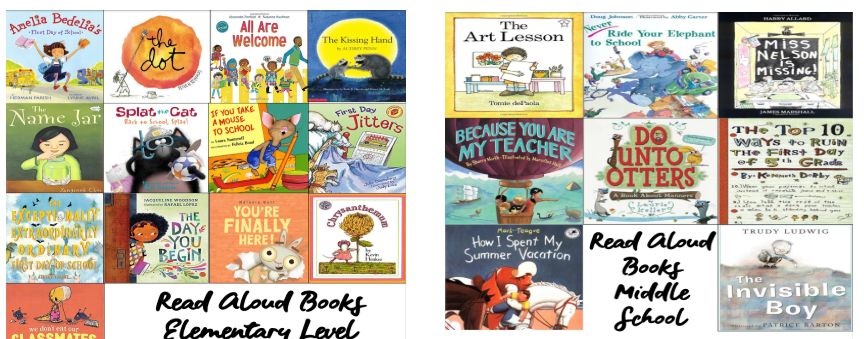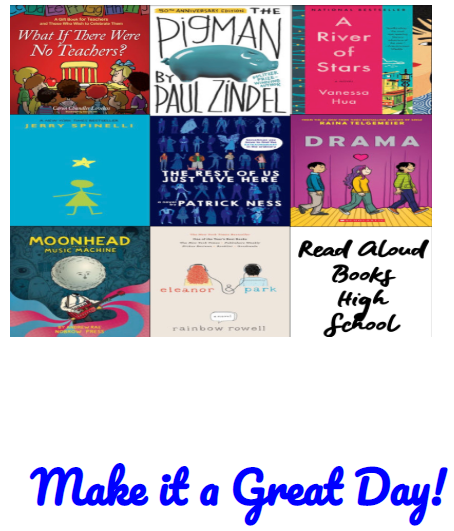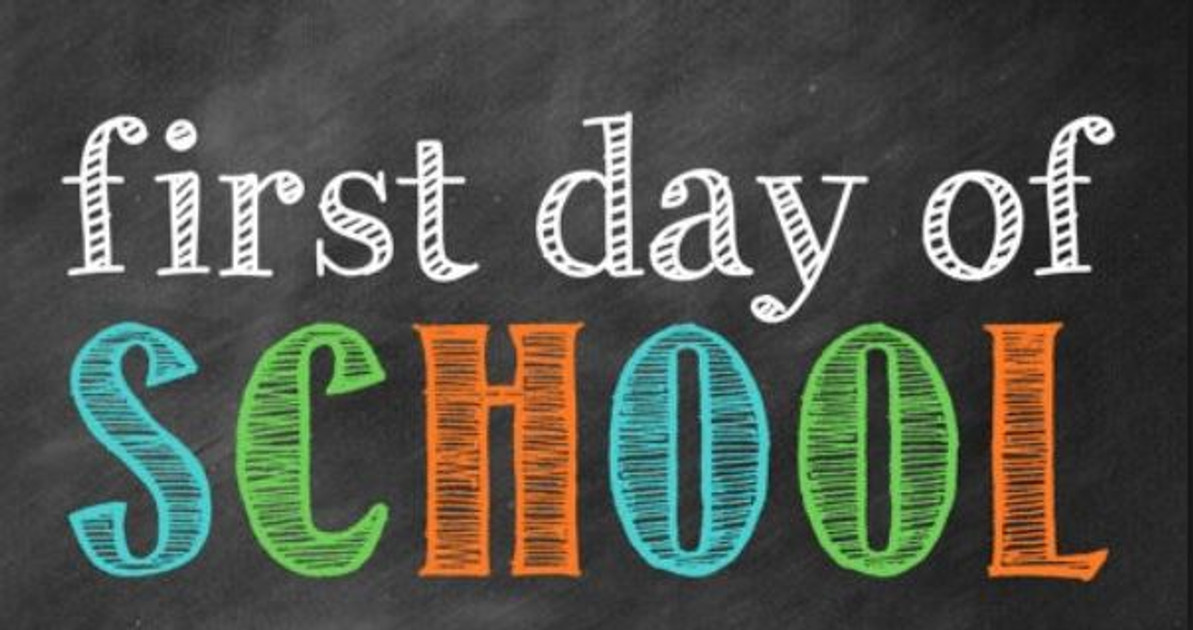Making the First Day of School Meaningful

The first day of each school year, for both teachers and students, is generally a bag of mixed emotions. These emotions can range from excitement, nerves, questions, expectations, surprise, relief (mostly for the parents!) and more. Calming all the emotions comes from over preparation for that all-important first day of school.
After combing through multiple resources looking for the elusive list of ‘Must-Do’s’ to create a meaningful first day of school, I’ve come to the conclusion that there are four main categories, applicable for all grades and subject areas. These include: Greeting and Establishing ‘the business of’ Learning,Building Community, Rules/Procedures/Expectations, and Read Aloud. The challenge can come in creating authentic, engaging, student centered, age appropriate activities within each category.
Below are some suggestions to get you started in establishing your first day of school routine that will hopefully set you up for a successful year ahead.
Greeting and Establishing ‘The Business Of’ Learning
Even though the first day of school will be hectic and pulling you in 17 different directions at once, be sure to Personally Greet Each Student.
Early elementary students will likely be accompanied by an adult, while Middle-schoolers may arrive with or without an adult. You may need to greet the adult along with the student. This can be a little tricky, as you want to meet and greet the adult and child in a way that is not dismissive to the adult and at the same time welcoming to the student. A smile and a sincere greeting to both will go a long way in establishing a welcoming environment.
Your greeting may look something like this.
“Hello, I’m xxx and I am the xxx grade teacher.”
“Your name is? “
“Nice to meet you … “ (Be sure to repeat their name.)
“Who brought you to school … ? (Encouraging the student to introduce the adult.)
“Nice to meet you … “ (Be sure to repeat their name). “I look forward to talking with you more during open house.” (This shows that you do want to meet with them later, but you have a classroom of additional students to greet.)
“Student’s name, please take your things into the classroom and choose a seat anywhere.”
* Have a plan for what to do with all the supplies students bring. This could be labeled boxes, shelf space, cabinet, or the like.
High-schoolers will generally arrive alone.
Your greeting may look something like this.
“Hello, I’m xxx and I am the xxx grade/homeroom teacher.”
“Your name is?”
“Nice to meet you …” (Be sure to repeat their name)
If required: “Who brought you to school … ?” (Encouraging the student to introduce the adult.)
“Nice to meet you …” (Be sure to repeat their name). “I look forward to talking with you more during open house.” (This shows that you do want to meet with them later, but you have a classroom of additional students to greet)
“Student’s name, please take your things into the classroom and choose a seat anywhere.”
Have Something for Students To Do When They Walk Into The Classroom.
This allows you to greet each student and/or adult and does not leave students idle. Not having assigned seats offers the teacher insight into their new students; who are friends, who talks with whom, who may be left out, etc. You, the teacher, can observe these interactions and use the information moving forward.
Elementary School
You may have a self-explanatory coloring activity: a frame for a future photo, something to go along with your classroom theme to decorate empty wall space, a face for them to complete, a form that has a questions geared towards basic concepts, a Get-to-Know Me sheet, etc..
Link for suggested activities:
Middle School
Links for suggested activities
High School
Links for suggested activities:
Depending on your creativity level and familiarity with PowerPoint, you could create a continuously looping presentation with directions for the activity waiting at the desk, an overview of the class, an introduction of yourself, photos/videos of a previous year’s activities, etc.
Building Community
What is Community and Why is it Important?
Community is a setting comprised of individuals who have a common purpose. In a community, all should feel welcome, valued, have a voice, and have a connection to each other. When this is the case, students feel a sense of ownership, will feel more comfortable, will show increased effort, as well as decreased behavior issues.
How to Build Community
Cooperative Learning Activities help students develop and work towards building a community they will be such an important part of for the duration of the school year.
Further Reading:
The Importance of Building Community in the Classroom
Links for Suggested Activities:
10 Team Building Activities for the 1st Week
Would You Rather Questions - Kids
Would You Rather Questions for Teens
Rules/Procedures/Expectations
Although going through rules/procedures/expectations and explaining them may seem tedious, it is crucial. Your classroom rules, procedures, and expectations, should mirror school rules as well as reflect what is required in your specific classroom. Basic guidelines for creating your classroom environment suggest that you do what works for you, is simple to enforce, does not demean students, and offer consequences as well as positive reinforcement.
Guidelines for Establishing Rules
- Be Clear
- Use only 4-5 Rules
- Rules need to Cover Every. Possible. Situation.
- Rules need to be Specific
Ex: Respect everyone. Ex. Raise your hand and wait to be called on before speaking.
Teaching Rules/Procedures/Expectations
- Be Deliberate
- Go S-L-O-W-L-Y
- Explain Everything
Suggested Procedure
- Recite the rule or expected behavior.
- Model yourself or with a student/s.
- Model having students demonstrate.
- Role-play the rules.
Describe a scenario or situation.Begin a situation and stop before it climaxes. From students, elicit possible positive choices to turn a potentially poor choice to a better outcome.
***PRACTICE. PRACTICE. PRACTICE.
Until you think you have gone overboard.
One procedure that will benefit each class and activity is deciding how to get your students attention. Options include a clap/clapping a rhythm, buzzer, bell, light,music, or chant.
Sample Chants
- “If you can hear me, clap once. Teacher: If you can hear me, clap twice.”
- “1–2–3, eyes on me!” “1–2, eyes on you!”
Read Aloud Books
There is no age limit for Read Aloud Books. Teacher read alouds help students increase their reading level as it models fluent reading. Hearing reading offers students authentic opportunities to experience tone of voice, emphasis of different words, pauses, pronunciation, what to do when confronted with a difficult word, hearing reading strategies in action, and so much more.
Younger students simple enjoy listening to stories. Middle school students are at an age where they can sympathize with characters and situations, and High School students not only enjoy being read to, but also relate to situations presented in stories and learn strategies that help them navigate this challenging stage of life. Read Alouds look different at different levels and can be used as story time, mini-breaks during the day, calming and focusing when classes change and waiting for all to get seated and ready to learn.
Suggested First Day of School Read Alouds:


Recent Posts
-
From Whiteboard to Algorithm: How Tutors Can Use AI to Boost Student Results
Source: unsplash.com Teaching Enters Its AI Era What if your sharpest teaching assistant never slep …Jun 9th 2025 -
Remote Teaching Jobs for Certified Teachers | Work from Anywhere
Guide to Remote Jobs for Certified Teachers In this changed world, education is no longer tied to th …May 27th 2025 -
Tips for Online Learners
Tips for Online Learners: How to Stay Focused and Succeed in Earning Your Degree Online Studying fr …Apr 7th 2025



